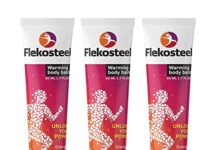Table of Contents
One of the benefits of being a musician is that you are without the regulations of many other self-controls, yet still able to discover them. Art, in a really general unbrave meaning, is merely the discussion of material for others’ view. There are many different way to tackling doing this, and various methods of doing well. But on one of the most basic degree, when the product exists, the brief has been concluded, and also the objective achieved. One can meddle anthropology, philosophy, sociology, faith, politics, cooking, biology, or any type of variety of other areas of study, and all one needs to do is to mount one’s search as imaginative. The aesthetic value of the art work might be examined, but it is artwork, just the same.
Are there truly no moral or technical proscriptions for musicians? There are definitely guidelines for artists, a minimum of within their very own self-control. While there are differing point of views regarding the correct partnership in between musicians and also their aides as well as contracted out labor, the amount of business sponsorship that an artist ought to take, and what the lines are for plagiarism in art, it should not be debatable to state that there policies. Utilizing slave labor to make art, as an example, is most likely a line that no one would certainly reject. Validating terrible criminal offenses as art, while possibly a subject fit for the ethical dramatics of Order, is not a concern we frequently see checked in the art world either. As much space for conflict as there remains in the moral regulations for art work, the truth that values are applicable is not under question.
Examining an individual’s sense of ethics can indeed be called among the many extra functions of art. After the initial objective of presenting things for others’ sight, one could try to ask the visitors a concern, or influence specific feedbacks. Art could seek to recognize the moral limitations in people’s minds, to uncover just how they differ and go across, to press simply over that limit in order to validate its area and instructions. The freedom that art has to violate boundaries and also observe reactions is just one of its lots of capacities.
But what happens when art’s own procedure of discovering principles and also methods go across versus the ethics and methods of various other techniques? Certainly, art is not the only one in discovering properly of doing points. Sociology, ideology, religious beliefs, as well as plenty of various other techniques have actually been associated with establishing their own borders, for as long as they have actually been identified as areas of job and study. They have their own errors, their own debates, their very own disasters. And also they have gained from centuries of crossing lines, redefining the lines, as well as crossing them once more. This is what we think about “technique” to mean– there is a background that can be tracked, that need to be considered by those joining the efforts and also considering themselves alike company, as they continue the process that will certainly generate that background into the future.
And also right here is where we have a problem, between art and also other self-controls. With art’s thought free pass to check out various other areas of research study without needing to officially join the club, art additionally bypasses the centuries of lessons that the research has found out. It is all well and good to meddle products of scientific canon from an “outsider” viewpoint of a musician. However values and approach are not just a series of archaic regulations to please themselves.
It is something to do research on oneself, or from one’s own narrative viewpoint. To embrace the visual of research study when doing an autobiographical job barely appears to break any type of important methodological treatments. The work of Ellie Ga as well as Sara Jordenö embraces an ethnographic visual, which is really say goodbye to questionable that a documentary maker, who has a specific connection to reality, while also leaving open a lot of area for creative certificate. There is likewise the archivist, “curatorial”, or flâneur aesthetic, which has actually reclaimed popularity in the period of the blog site as well as social networks timeline, but goes all the way back to Walter Benjamin’s Arcades Task– an unconstrained, sprawling research study project, that goes as lengthy as it goes, till it does not. These aesthetically-oriented research study projects hang in emphasis, since there is no requirement for them to be anything else. However at what point could we call this art work “study” in a strict feeling? Would function making use of this research need to be peer-reviewed? Otherwise, who else could utilize this study, and also for what objectives?
- Leonard Knight’s “Redemption Hill”
- Leonard Knight’s “Salvation Mountain”
Then there is work that overlaps right into faith. Religious beliefs, in modern times, is frequently defined by what is canonical as well as non-canonical. The entire distinction of what is spiritual, is based upon religious authorities’ own rules wherefore is included as well as what is not. However there is also a long background of people faith practice, in which the laities of numerous religious activity do their very own interpretation of the faith’s principles, with what would certainly qualify as art. Redemption Hill, for instance, is art that absolutely takes religion as its item– but is it religious beliefs itself? Would Certainly Leonard Knight, the maker of Redemption Mountain, have to call himself a church authorities, or be paid by a church authorities, for his work to be formally considered religious?
The clinical crossover is also in fashion. Consider the Facility for Genomic Gastronomy, “an artist-led think tank that examines the biotechnologies and also biodiversity of human food systems.” Absolutely, there is plenty that artists are capable of doing to raise understanding as well as breakthrough expertise of biologically-linked issues that impact people in everyday life. As well as while the CGG talks to several researchers and various other specialists operating in clinical techniques to ensure their job maintains a requirement of accurate basis, their efforts to reach a broader audience suggest that their job handles a much more ludic grounding than “research study” itself. The crossover becomes its very own category, something that is distinctly in between scientific research and also art, however not truly either of the two definitely.
With how complicated scientific research can be in modern times, crossovers are probably a really beneficial mentor device. Yet what concerning when crossovers move from science to para-science? Fernando Orellana’s “Shadows” takes ghost-hunting gadgets, as well as pairs them up with products he found from estate sales, waiting to see if any spirit emanations will trigger these rather clinical recording devices.
” Somewhat scientific” is a big canister of worms. These ghost-hunting devices are marketed as clinical, a really bothersome distinction, as noted by Natalie Kane in this fine overview of the modern technology.
Orellana’s job, nevertheless, does not necessarily present these devices as clinical. He merely provides them. So maybe it depends on the audience to make a decision whether or not they are scientific or not, although he doesn’t truly offer much detail on exactly how the tools are purported to function.
To maintain a mood of creative result, Orellana defines the job favorably, “each equipment gives the dead an opportunity to proceed connecting in this globe as well as the next.” This is not a scientific test of these modern technologies, but an use of “somewhat scientific” technology to “in fact” interact with the dead. Whatever “actually” implies: considered that this is art.
Yet there is an additional included facet of Orellana’s project: each technological device is paired with an individual product, that in fact came from somebody that is currently dead. Unlike the suspicious clinical standing of the modern technology, these objects have actually a guaranteed truth, attached to a person’s life, who is now no more living.
Someone, that the artwork is seemingly attempting to get to beyond the grave. What is the values of trying to get in touch with a dead person without their authorization, without the consent of the living family members of that person?
On the one hand, these items were purchased legitimately, through estate sales. On the other hand, the purpose of an estate state is avowedly not to transfer the psychical remainder of the deceased’s essence for use in art programs. Is this ethical? Just how do we even begin to address this inquiry? Would certainly it be more or less moral if the innovation worked and also could actually get in touch with the dead, or if it could not and also was pure charlatanry, deployed only for “imaginative” impact?
Fernando Orellana’s “Shadows”.
There are moral proscriptions from the self-control of science, that would certainly reject such innovation as snake oil, and also there are ethical proscriptions from the self-control of para-science, that would certainly make use of such technology at the behest of living relative, or the medically curious and also open-minded. And there are also anthropological and folkloristic principles for exactly how to accumulate data as well as story from other people, which may relate to deceased people as high as living people. Yet using the free-for-all pass known as art, there is a feeling in which we feel we can evade all these values, because they don’t apply. Orellana is not a researcher, not a para-scientist, not an anthropologist, not a folklorist. He is a musician, and simply in assembling this material, plugging all of it in, as well as leaving it for display screen in a gallery, his job is done.
Should we anticipate a lot more from him? Or is what he gives us the factor in and of itself, due to the fact that currently we are free, through critiquing essays, to establish a moral method for artists trying to call spirits using modern technology in the future? What is the extent of the ethics we anticipate a work of art to have? Does this level stop beyond the workshop door, at the limits of the gallery, via the methods of criticism, or even into the spirit worlds? Part of the trouble is that in this topic, we are verging on the realms of the unreal. Trying to specify principles in a sector that many individuals believe doesn’t exist, is quite a job.
However this really isn’t anymore challenging that the technological values of today. What are the standard anthropological techniques for collecting information from anonymous comments on the web, whose writers can not be reached to authorize launches even if they would? Exactly how do evaluate the values of research on information currently allowed by an End-User License Agreement, rather than an Internal Review Board?
What do we perform with scientists who conduct study for tranquil means, just to have that research study re-purposed by the military-industrial complex? What is the moral standing of those that develop an innovation that drastically boosts day-to-day live– like the automobile for instance– only to have that modern technology become the key cause of death for a big section of the population?
As we develop brand-new methods of human existence, new tools by which to carry out that presence, brand-new information by which to gauge that existence, and also brand-new dimensions in which this measurement lies, we are encountering context collapse between the former honest proscriptions of the excellent majority of the globe’s present knowledge. All the boundaries are conforming each other, regardless of whether this interruption is intentional.
Maybe art truly is on the reducing edge, because it is discovering these points of context collapse ahead of the contour, whether willingly or by mishap. As art assembles material from the developing globe in unique means, it is going to alter new vectors of underhanded habits prior to the majority of society even considers the possibility.
The inquiry is, after that, exactly how does art react to the grey goo it creates? Art uncovers a brand-new honest trouble– congratulations. However then what? If art is stress-testing the future of epistemology, does it simply drink the wall surfaces, and that’s it? Does it accumulate its check as well as carry on? Or is it another person’s work to get the items?
Uncategorized






